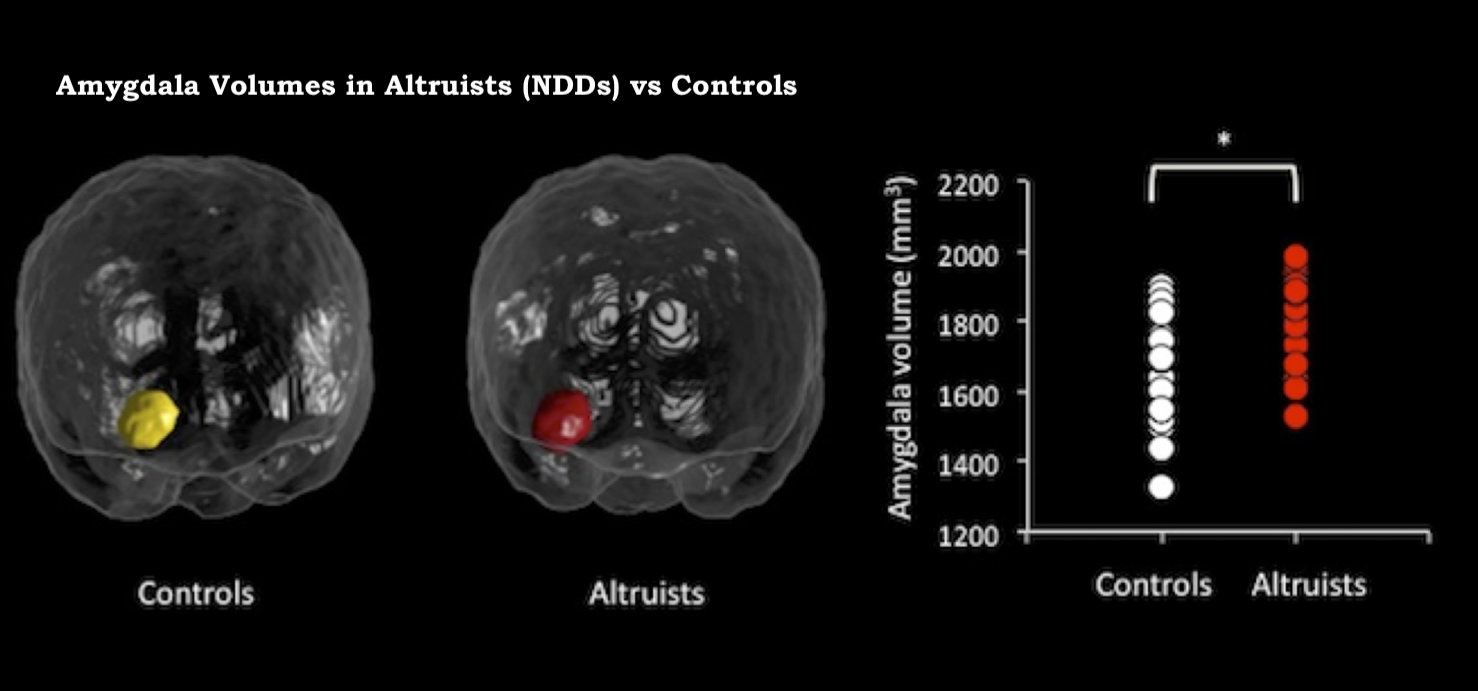Unhinged or Unselfish: A Deep Dive into Non-Directed Donors
1MedStar Georgetown Transplant Institute, Washington, DC, 2Georgetown University Hospital, Washington, DC
Meeting: 2019 American Transplant Congress
Abstract number: B268
Keywords: Donation, Kidney transplantation
Session Information
Session Name: Poster Session B: Kidney Living Donor: Quality and Selection
Session Type: Poster Session
Date: Sunday, June 2, 2019
Session Time: 6:00pm-7:00pm
 Presentation Time: 6:00pm-7:00pm
Presentation Time: 6:00pm-7:00pm
Location: Hall C & D
*Purpose: Non-directed donors (NDDs) bring great excitement to living donor centers. However, evaluating NDD motivation can be challenging. Our group compared the altruist (NDD) with the general population and criminals who fall on the other end of the psychopathy scale. MRI scans showed NDDs have larger amygdalas and stronger white matter tracts that connect the amygdala to other parts of the brain controlling parental and emotional response to others’ distress. By examining brain structure, function, and behavioral responses to pointed questions, we hoped to identify NDDs that have the greatest chance of completing donation.
*Methods: All potential donors (NDD and non-NDDs) completed a questionnaire including questions about motivation. Answers were compared using logistic regression analyses.
*Results: There were 1290 prospective living donors; 119 (9.8%) had donated at time of review. Predictors for opting out were younger age and more distant relationship to recipient. The only statistically significant (OR=1.58, p<0.05) motivation predicting donation was language reflecting recipient's need, rather than a focus on donor's goals or desires. Statements such as, "My brother needs this" or "This will help my sister live longer," rather than "I want to do this" or "It will make me feel better to help," were predictive of moving forward with donation even when controlled for relationship to the specific recipient.
*Conclusions: From questionnaire results and interviews with NDDs, responsiveness to recipient’s need is the one true predictor of completing donation. This is consistent with brain findings, which show brain regions associated with non-directed donation are subcortical structures involved in rapid decision-making rather than complex thought, and associated with the parental care system, which motivates rapid responses to others’ needs. Altruistic motivation is a natural product of brain anatomy, and NDDs can serve as a perfect example to further understand these pathways.
To cite this abstract in AMA style:
Verbesey J, Williams M, Ghasemian S, Bacigalupo A, Gilbert A, Vranic G, Javaid B, Cooper M, Marsh A. Unhinged or Unselfish: A Deep Dive into Non-Directed Donors [abstract]. Am J Transplant. 2019; 19 (suppl 3). https://atcmeetingabstracts.com/abstract/unhinged-or-unselfish-a-deep-dive-into-non-directed-donors/. Accessed December 15, 2025.« Back to 2019 American Transplant Congress

